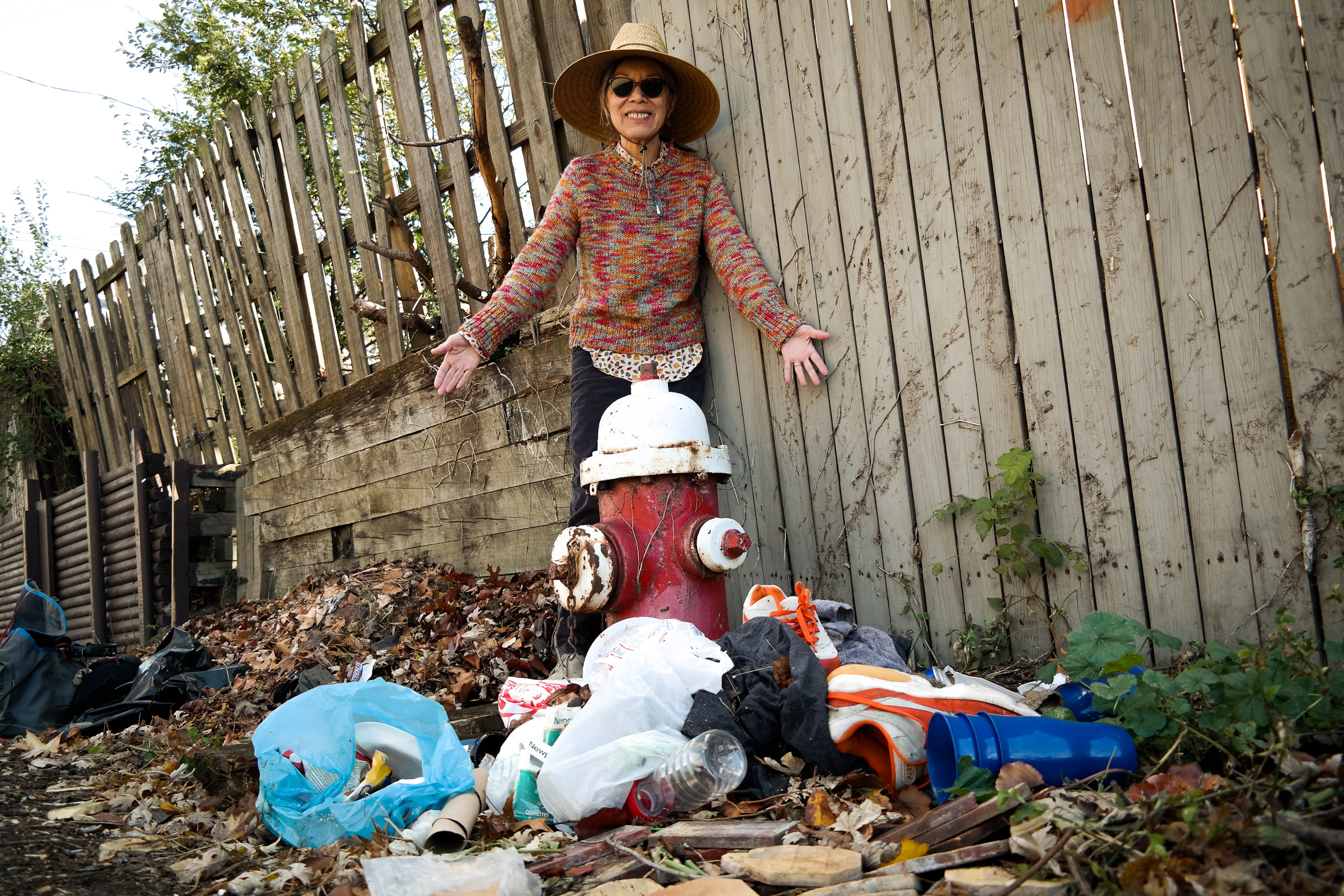Littering continues to be a big environmental problem in cities. And one Pittsburgher from the city’s North Side neighborhood is taking the problem personally. Meda Rago regularly picks up trash to keep her street clean. And she really isn’t kidding when she says she’s found some pretty weird things chucked into the alley behind her house.
“About two years ago, we came down the alley and saw an entire roast turkey lying in the street,” Rago says.
Normally, the alley doesn’t draw such exotic things. Typically, it’s stuff like old fast-food bags, soda cans and worn out sneakers.
LISTEN: “Why Do People Litter?”
But Rago wanted to know why some people continue to throw their trash on the ground, while others observe the taboo on littering. Well, it turns out, there are actually people who study this topic. Among them is California State University social psychologist Wesley Schultz, and he says one of the most interesting parts about this whole issue is that littering wasn’t always seen as the social ill it is today.
“If you look back at the surveys that were done in the 1960s, people were much more accepting about throwing waste just openly in public spaces,” Schultz says.
But that changed a lot in the span of just a couple decades. Schultz says by the 1980s, it was not only seen as socially taboo—but unethical—to just throw your trash on the ground.
“The thing that’s often cited is the push by Keep America Beautiful and the ‘Crying Indian’ public service announcements that were aired in the early 1970s. It sort of captured the idea that throwing litter, throwing waste into public spaces degraded that space.”
Schultz says the establishment of that social norm against littering was a game changer. But social norms aren’t 100 percent effective in themselves. And with littering, Schultz’s research showed that people most often break that taboo for really practical reasons.
“We found that the distance to a trash receptacle was the strongest predictor of littering,” Schultz says. “So the farther away you are from a trash can or a recycling container, the more likely you are to litter.”
WATCH: “Keep America Beautiful’s 1970 ‘Iron Eyes Cody’ PSA”
So if cities put trash or recycling containers in public spaces, people start doing the right thing again. And Schultz says this proves a basic assumption we make about litterers is totally wrong—namely, that people who litter, just do it because they don’t care.
“Often times people do care. But it’s too much of a hassle, it’s too inconvenient. And so people do litter, even though they already care about it,” Schultz says.
In other words—and Schultz says you could actually say this for a lot of environmental issues—we don’t mind doing the right thing as long as it’s not too disruptive to the way we live our lives. And it’s also clear that we have a huge influence on each other.
“The presence of existing litter was strongly predictive of littering behavior. So if you’re in a place that’s already highly littered, you’re much more likely to litter than if you’re in a place that’s clean or free of litter.”
So no matter how futile Meda Rago’s neighborhood cleanups might feel, they actually are making a difference. Rago plans to continue her cleanups with her neighbors. But what she really wants now are some new garbage cans for the neighborhood so she doesn’t have to pick up so much trash in the first place.
###
Meda Rago’s story is part of our Citizen Q series, where we answer your everyday environmental questions. If you have a question of your own, drop us a line at in**@************nt.org or on Facebook.



